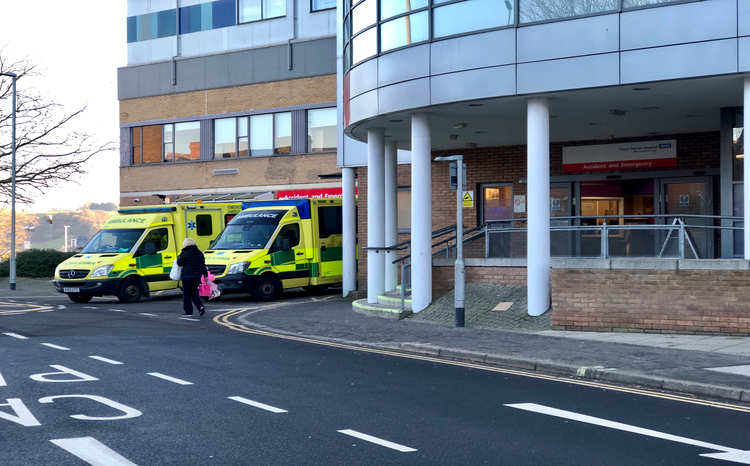Interview: Tracey Watson and Tracey Grainger
- 22 October 2015

The idea of thousands of patients busily reading and sharing their health records on smartphone apps – while feeding in data from their wearable devices – excites the proponents of patient empowerment.
But a lot of work must go on in the background to make this a technical possibility. NHS England’s ambition is for some third party providers of patient facing services to be integrated with England’s four principal GP clinical system suppliers by April next year.
This will provide smaller suppliers with access to GP-held patient information and, in theory at least, support a proliferation of patient-facing apps, key to the “digital revolution” in healthcare that health secretary Jeremy Hunt is keen to usher in.
To allow this to happen, the Health and Social Care Information Centre has developed a ‘pairing process’, which subsidiary suppliers must progress through in order to interface with the principals.
However, Tracey Watson, NHS England’s senior responsible owner for GP Systems of Choice admits the current process is not “optimised” and there are many challenges, both technological and commercial, still to be overcome.
GPSoC and the pairing process
When a new GPSoC contract was signed in March last year, it specified that principal system suppliers – Emis, TPP, INPS and Microtest – must provide interface mechanisms to allow suppliers of subsidiary services to integrate with them.
More than 18 months later, only two integrations have completed the HSCIC’s ‘pairing process’. These are Total Billing Solutions with its product Medibooks, which is integrated with TPP’s SystmOne, and My RightCare, which has integrated with Emis. Both only went live this month.
While progress has been frustratingly slow, Watson says the project has recently “turned a corner.” She describes a number of factors that have “created the challenges that have been GPSoC integration.”
These include commercial behaviours have had to be cultivated and the need for substantial coaching for some smaller third party vendors, as well as the task of developing the actual interface mechanisms themselves.
“All parties have equally been frustrated. However, I completely empathise with the subsidiaries who have invested money to go on the framework when it’s been such a long time now for pairing to be enabled,” Watson says.
“It’s a technical and cultural change. [Such changes] are never quick, especially when you are talking about commercial relationships.
“From a commercial perspective, we have turned a corner in a massive way. From a technical perspective there has been a huge piece of work done in terms of joining up the dots so my big challenge on GPSoC now is: ‘How do I make it relevant for the system to actually use it?’”
While she does not want to end up with a process that is too costly to run or go through from a supplier perspective, Watson also needs it to be safe and reliable and there is a need to strike a balance between these things.
“The ambition is to be able to offer that choice of patient facing services and the key to that is technological enablement, ensuring that the pairing process is optimised so we can cope with demand to come through the service,” she explains.
The GP IT Assurance and Maturity Model
Watson also manages the commercial and market engagement across the digital and technology team in NHS England and is responsible for looking at the adoption strategy for personal health records.
“It’s a fairly diverse set of responsibilities, but they actually all tie in quite nicely as one big, long supply change,” she tells Digital Health. Watson will use her presentation at EHI Live 2015 in Birmingham next month to talk about what is in the pipeline.
Another issue up for discussion at the show will be a preview of the new GP IT Assurance and Maturity Model being developed by NHS England.
Digital Health News reported in April 2014 that NHS England was developing a primary care digital maturity index, with the first iteration due out in April 2015.
NHS England’s head of digital primary care development Tracey Grainger says the new assurance model will be outcomes based, adding there is “little assurance in the investment in technology within primary care.”
The national GP IT budget is £250 million and the maturity model is designed to reveal how that is being invested; and whether it is being spent in the right areas.
Grainger says clinical commissioning groups need insight into what is being used in primary care and where they should be targeting investment if practices haven’t adopted efficiencies. The new model will also support commissioners to develop their local digital roadmaps, she says.
More models – and don’t forget the roadmaps
The GP IT Assurance and Maturity Model will be published and available, but only within the NHS, similar to the current Primary Care Web Tool, which shows the General Practice High Level Indicators and General Practice Outcome Standards.
NHS England is also developing a new digital maturity index for all NHS providers. Clinical commissioning groups must have defined which healthcare organisations sit within their remit by the end of this month and need to report back on their current digital maturity the end of next month.
The results will be made public next March. Local Digital Roadmaps must be submitted the following month and will be published later in the year.
Grainger says that a second slot at EHI Live will enable a much wider discussion on interoperability, and will be a key opportunity to learn about what the NHS has already done in this space, and to help CCGs create their digital roadmaps.
She hopes for an interactive session and says she wants a around: “Are we [NHS England] going in the right direction?” and what more practical support it could be offering.
Bigger changes ahead?
Grainger says that the announcement in September that CCGs will lead the way in digitising the NHS by creating local digital roadmaps changes the landscape for primary care IT.
It raises the question of whether it is now fit for purpose – as it has always focused on individual practices, rather than integrated models of care, when the direction of travel is clearly integration between health and health and health and social care services.
“We have been reviewing the current GP IT operating model and developing a digital primary care strategy. We have a number of challenges because we are developing GPSoC, which is different to GP IT and primary care commissioning which is different from technology: so we are bringing all of that on to a single operating model,” she explains.

|




